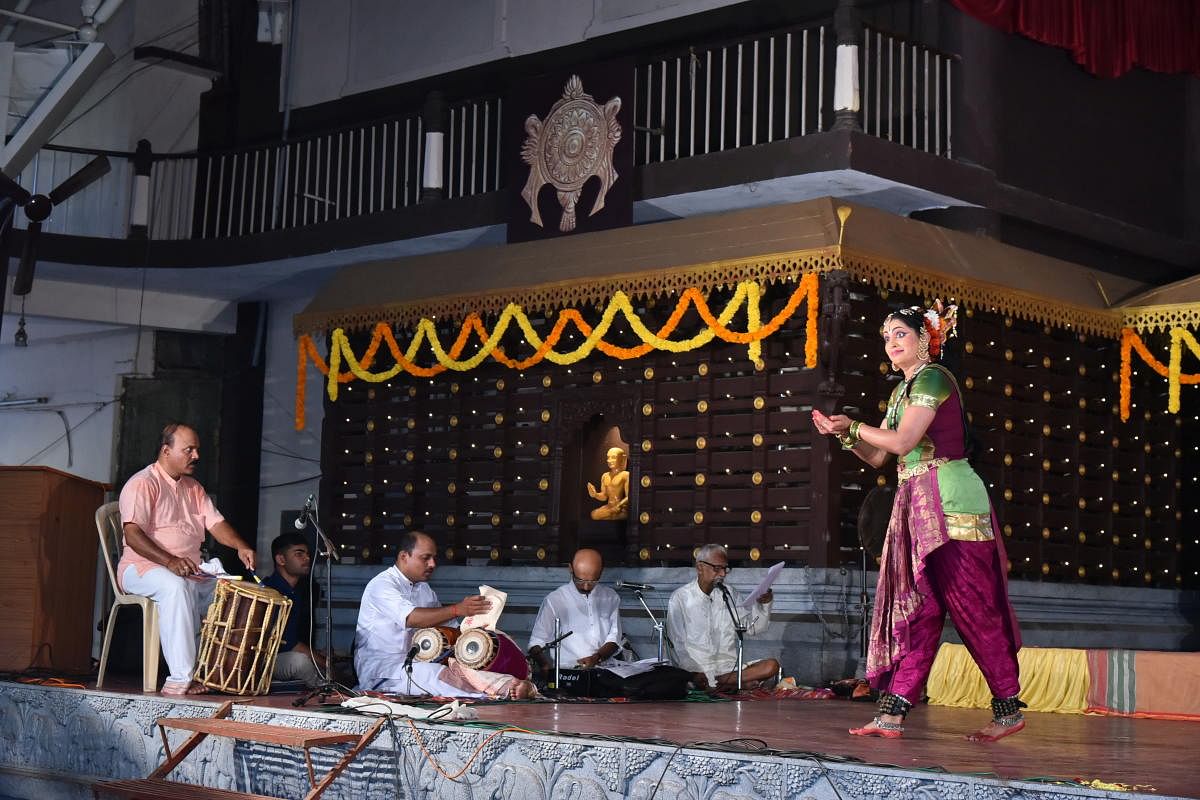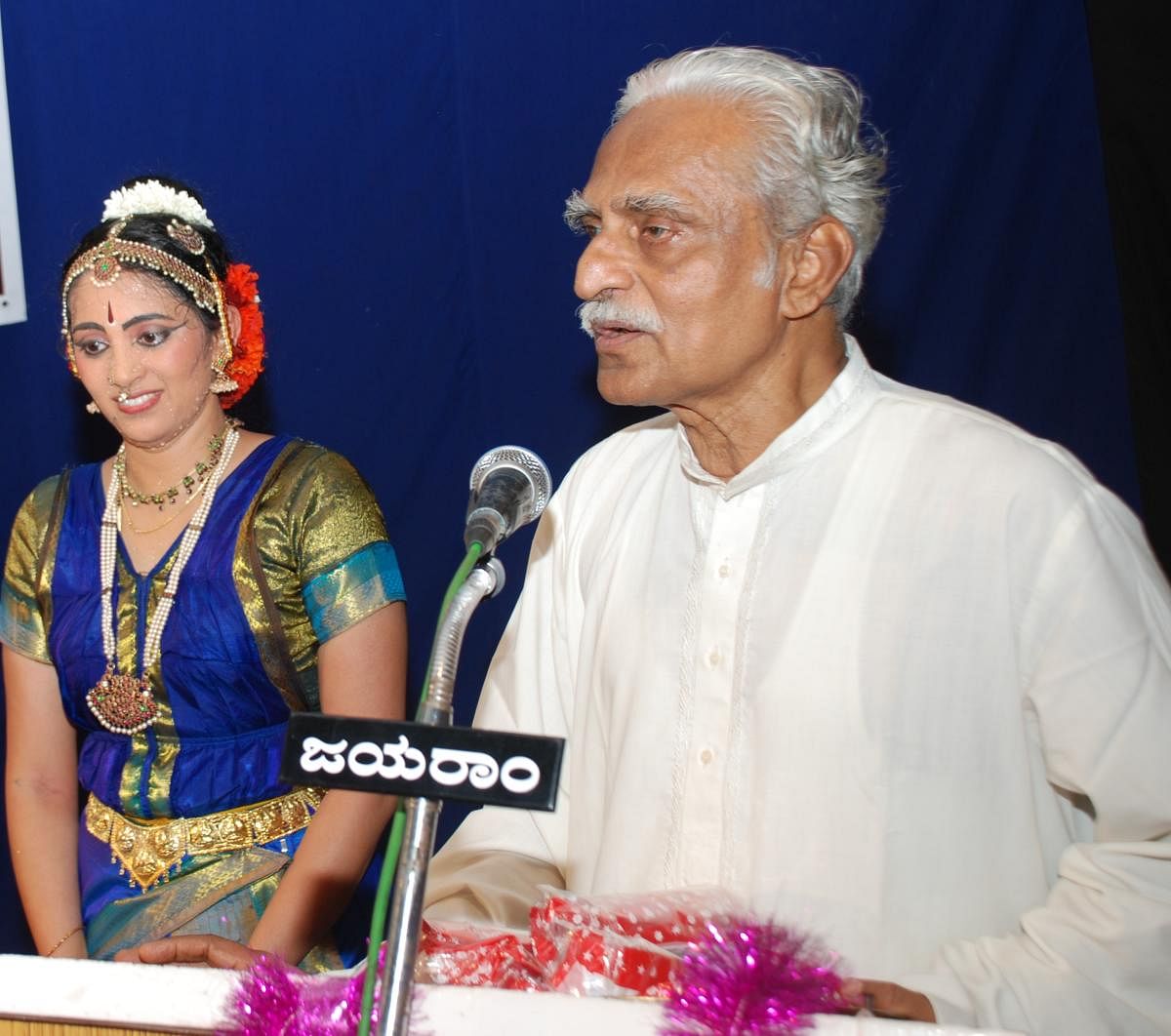

In the early 2000s, Vasundhara Doraswamy of Mysuru took an interest in the gaathas (sagas) written by Udyavara Madhavacharya, the patriarch of gaathas in Kannada.
Madhavacharya was a professor of Economics and passed away in 2020 after a distinguished career at 32 years. In the gaathas, he wrote about strong women from the great epics, bringing to life a new genre of dance that blended elements from Bharatanatyam and Yakshagana.
Madhavacharya’s wide-ranging research and study of Rabindranath Tagore’s works inspired him to bring this art to Karnataka.
Bhramari Shivaprakash, student of Vasundhara and daughter of Madhavacharya, is an exponent of this dance form. Panchali (Draupadi), Devayani, Urvashi, Seetha, and Radhe are among those whose stories she now portrays in this form. “I like Panchali (Draupadi) the most. Her struggles after her swayamwara are complex,” Bhramari says.
Portraying the contrasting attributes of Sita and Ahalya is not easy, and sometimes, the contrasts within a single character challenge her skills. “Draupadi’s birth in a holy fire and her end in the icy-cold Himalayas are contrasts. Enduring an attack on her modesty, she stands her ground and becomes an icon of woman power for all time. The story is powerful, and during the rehearsals, I could not help but cry,” says Bhramari.
The convention of one person enacting a role from the myths is well established in Yakshagana. The dance-drama has already portrayed the characters of Bhamini, Amba, Shurpanakha, Yashodha, Rukmini, Draupadi, Ulupi, Chitrangada and Subhadra. “It is not easy for one person to show multiple emotions in the gaatha form. The tenets of Bharatnatyam come under stress. Theatrics gain more prominence, and the satvika abhinaya (restrained expression) takes a great beating. But in the works of Madhavacharya, the classical tenets are built in and we cannot go out of the framework of classicism. I experienced this myself when we enacted his work ‘Soudaryalahari’ at Kaladi, the birthplace of Shankaracharya, in Kerala,” recalls Vasundhara.
She says Madhavacharya’s gaathas has inspired the creation of a special theatrical form. “He provided Yakshagana himmela (background musicians), and named it “Yaksha-Bharata Sangama,” says Vasundhara.
Bhramari has won wide acclaim for playing Panchaali from audiences can’t forget the joy in her eyes when she sees Arjuna, the confusion she experiences when she sees Karna, and the outright horror she feels at the sight of Duryodhana.
The gaatha art has come a long way since Tagore wrote ‘Chitrangada’. Bhramari is now taking her shows to temple and cultural festivals across India in Kerala, Tamil Nadu and Maharashtra and13 places in the United States of America.